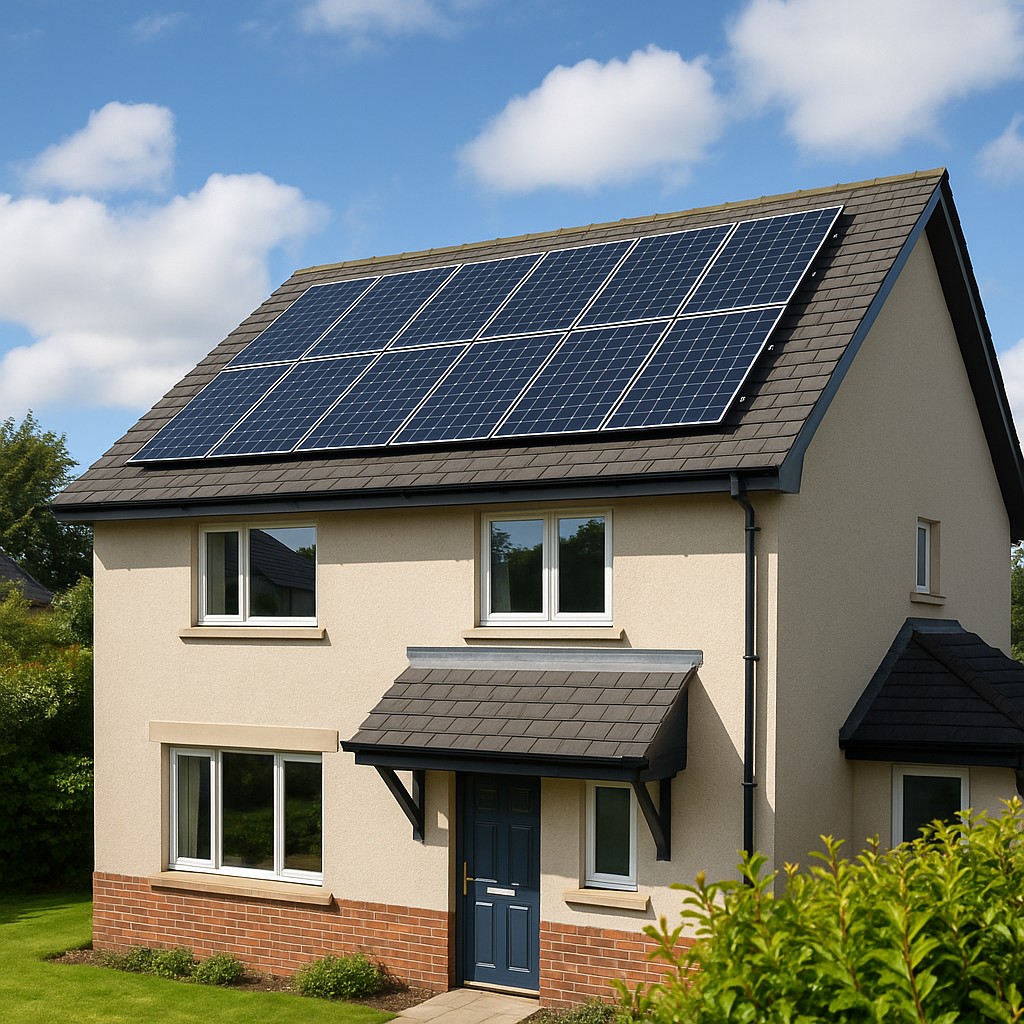Solar panels generate DC electricity. DC stands for Direct Current. The electric grid uses AC electricity. AC here stands for Alternating Current. Your inverter ‘converts’ the DC electricity from your solar panels to AC electricity to use in your home.
Modern solar panel inverters do a lot more than just convert DC to AC, they also monitor and report on the performance of your solar panel system. If you are using an app to monitor the performance of your solar panels, then that information is coming from your inverter.
Another function of inverters is to disconnect your solar panel system from the grid in the event of a power outage. You do not want your panels sending power back into the grid during an outage when you possibly have an engineer working on the line. In this situation your inverter will stop sending power to the fuse board in your home.
While isolating your system from the grid, some inverters are capable of providing back-up power from the battery.
There are 3 common types of inverters used in solar power systems. They are
- Microinverters
- String Inverters
- Hybrid Optimisers
Microinverters
A microinverter is connected to each solar panel so that the DC is converted to AC at source. That means if you have six solar panels, you would have six microinverters. This makes it very efficient. It also allows panel-level monitoring. The electronics are very robust and designed to last over 20 years, comparable to the warrantied life of the solar panels themselves.
Since each panel operates independently, any drop in performance of one panel due to shading or a fault won’t affect the rest of the system. If it’s a fault, the panel-level monitoring will detect it.
Microinverters are relatively expensive and are more suitable to smaller systems where a battery is not being considered.
String Inverters
String inverters have been around a long time and the technology behind them is well proven. Solar panels are joined together by their cables into a ‘string’. Smaller inverters will accommodate just one string, larger inverters are capable of connecting two strings. For domestic solar PV systems, it’s uncommon to see an inverter with more than two strings.
While string inverters have been around a long time and work well, they have one downside. If one of the panels on your string is compromised in some way, say by some shading or damage, it affects the performance of the whole string.
Hybrid Inverters
A hybrid inverter is a string inverter which can also work with a battery. It’s capable of handling two sources of DC power, the solar panels and the battery. Depending on its design, it may have a Battery Management System (BMS) built in. Irrespective, a BMS is required to control when the battery is charged and discharged.
How powerful does your solar panel inverter need to be?
While there are several factors to consider when sizing a solar panel inverter, the main one is the manufacturer’s datasheet. This will state the maximum input DC power the inverter can handle and the maximum AC output. Standard inverters typically allow 50% more power on the DC input side than the AC output side. So, an inverter rated 5kW, for example, would typically allow connection of up to 7.5kWp of panels. If the solar panels are 400W, than up to 18 panels can be connected to the inverter, typically in two strings of nine panels each, but that will depend on the layout of the roof and the space available.
The design of a solar panel system is quite technically challenging to take into consideration the many factors that determine its ultimate performance. It’s best to work with a solar panel company that understands this, has the experience doing it successfully, and takes it seriously.








